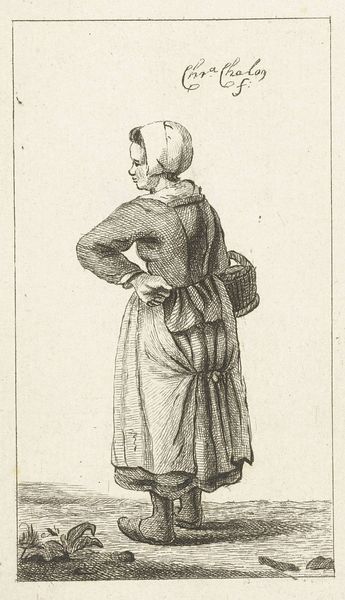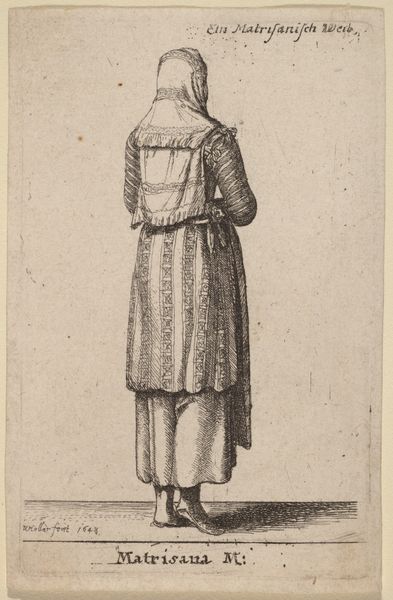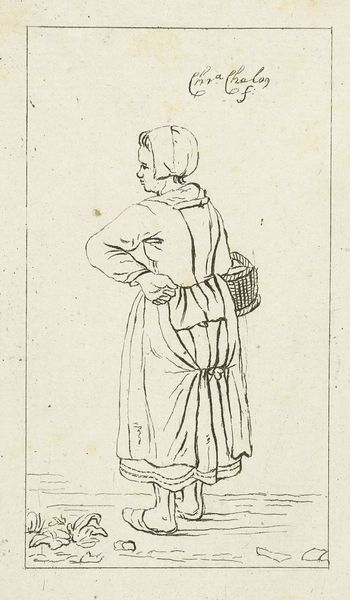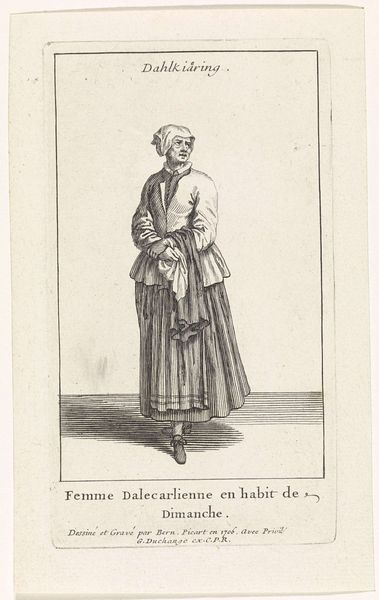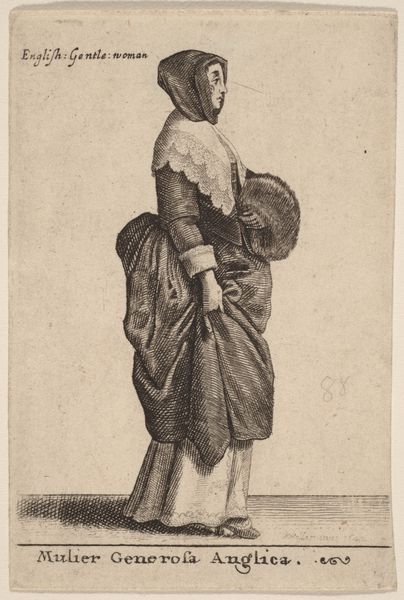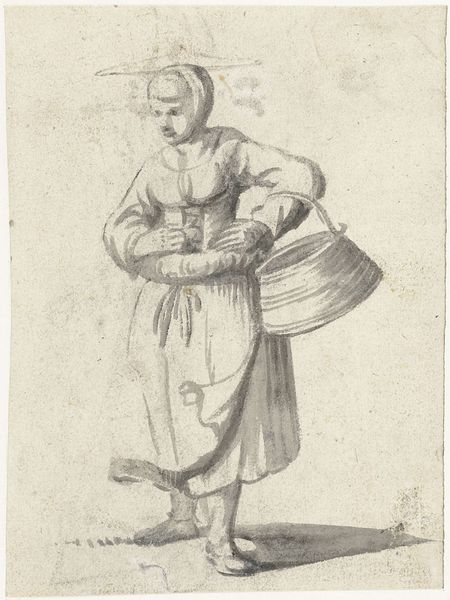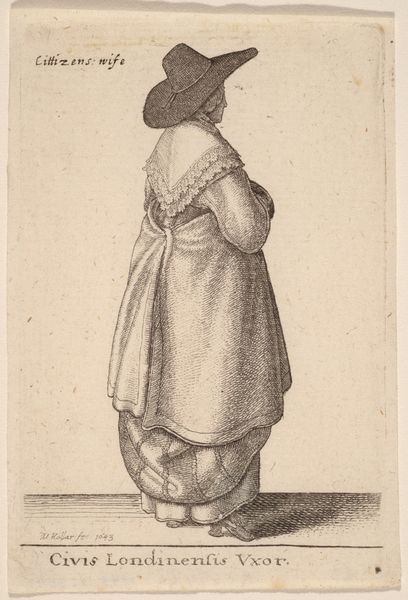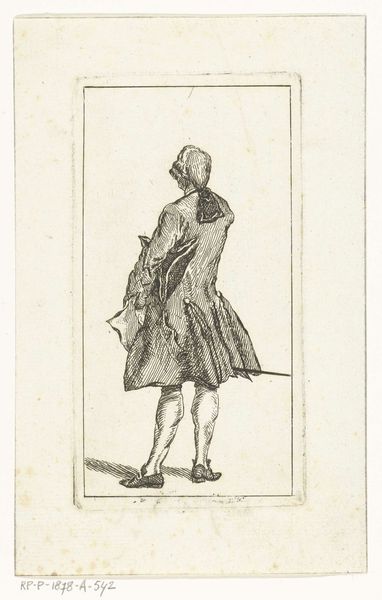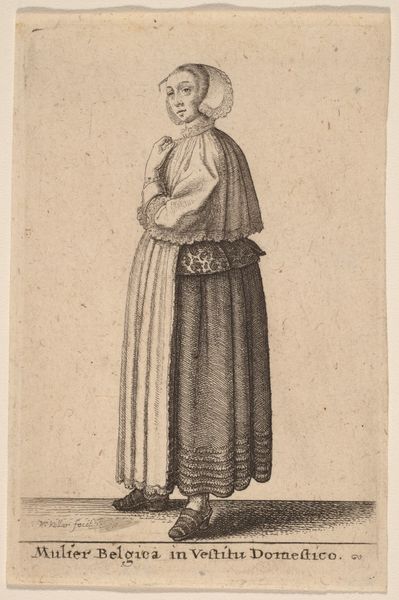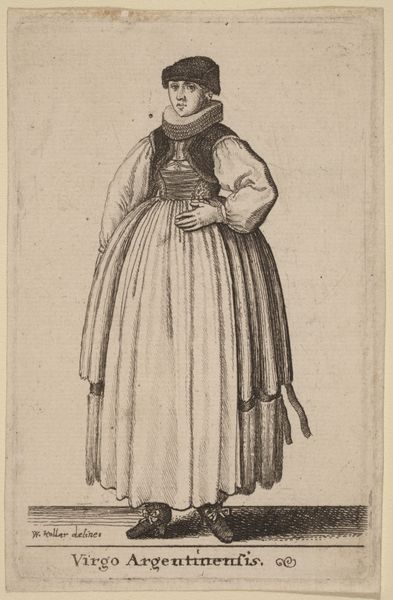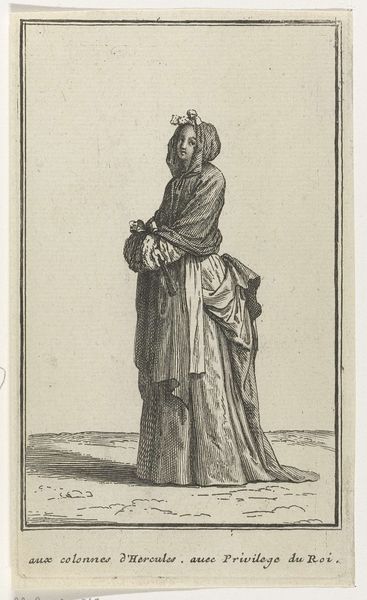
drawing, ink, pen
#
portrait
#
drawing
#
neoclacissism
#
figuration
#
ink
#
line
#
pen
#
genre-painting
Dimensions: height 100 mm, width 57 mm
Copyright: Rijks Museum: Open Domain
Editor: This drawing, "Vrouw met mand," or "Woman with Basket," was made between 1777 and 1779 by Pieter de Mare using pen and ink. It's a simple line drawing, but I’m curious about its place, seemingly, between portraiture and everyday genre painting. What stands out to you in terms of its historical or social context? Curator: It’s fascinating how De Mare captures this figure. This wasn't a formal, commissioned piece. The attention to the woman's working attire and the basket hints at the growing interest of the time in depicting everyday life, in parallel with Neoclassical ideals that favored a romanticized, ideal representation of the Antique. Think about the rise of the middle class and the growing importance of representing their lives. Where do you think this piece situates itself amongst those two approaches? Editor: I see what you mean. The classical references aren't obvious at first, but perhaps the simplified lines are an attempt to engage with that style. Still, it seems like it gives us an actual, working-class person. Curator: Exactly! It reflects a tension. Artists at the time grappled with portraying reality versus idealizing it, reflecting broader social shifts and the evolving role of art itself. De Mare likely intended it for a print series of such models or types. How might prints have shaped the visibility and perception of ordinary people during this era? Editor: Ah, I see, prints made images more accessible to a wider public, influencing how people thought about different social classes and identities. By viewing, in turn, reinforcing existing views of such. Curator: Precisely. It also prompts us to consider how artistic choices contribute to narratives around social class and visibility. And by its place inside a Museum like the Rijksmuseum today, its status may evolve beyond recognition. Editor: That’s fascinating. Thanks for helping me understand its layered significance. Curator: My pleasure! Art is always a product and mirror of its time. Reflecting on its social and cultural contexts brings so much more to our experience.
Comments
No comments
Be the first to comment and join the conversation on the ultimate creative platform.
